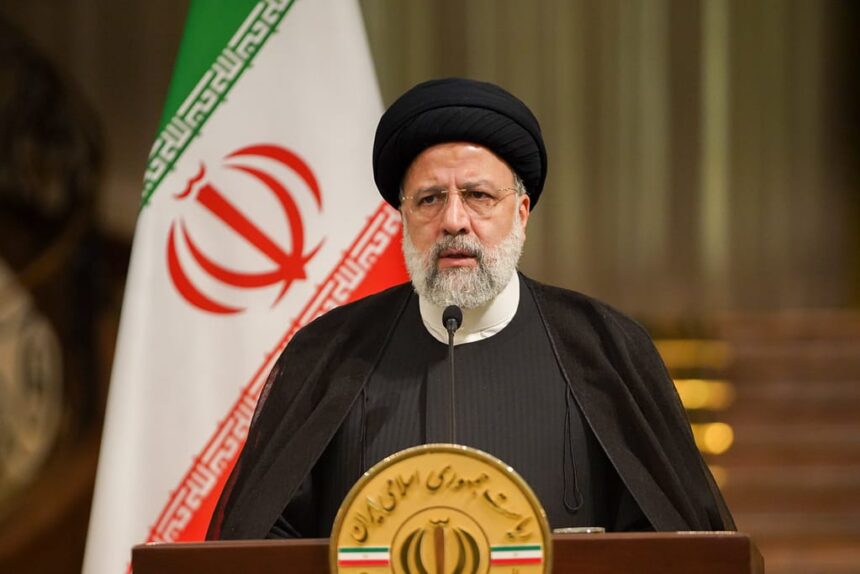The disappearance of Iran’s President and Foreign Minister on May 19th, 2024 in a helicopter crash has sent shockwaves through the country. Against a backdrop of regional destabilisation and renewed tensions, particularly with Israel, the election of a new president is imperative, and the death of Ebrahim Raissi also raises questions about Supreme Leader Ali Khameini’s future prospects for the country. What reactions has the death of the President provoked among the Iranian people? In the run-up to the presidential elections on 28 June, what are the political and geopolitical prospects for Iran? Thierry Coville, Research Fellow at IRIS, provides some answers.
How was the news of Ebrahim Raisi’s death and the circumstances surrounding it received in Iran? What can we learn from his presidency?
The news of President Ebrahim Raisi’s death on May 19th, 2024 after a helicopter crash in Iran’s East Azerbaijan province came as a political shock, as it would have in any country where a similar incident had taken place. The first reaction of the authorities, and in particular of the Leader Ali Khameini, was to assure them that there would be no consequences for the running of the country. The first vice-president, Mohamed Mokhber, was appointed as interim president pending new presidential elections at the end of June 2024. It should be noted that he was the director of one of Iran’s largest foundations (bonyads), Setad Edjrâi Farman Imam, i.e. parastatal bodies which own numerous companies, pay no tax and report only to the Leader. This appointment therefore confirms the economic and political weight of this parastatal sector (comprising the bonyads and companies working for the Pasdaran) in the Islamic Republic of Iran. An investigation has also been launched by the Chief of Staff of the Armed Forces, Mohamad Bâqeri, to determine the causes of the accident. All that can be said on this subject is that Iran’s civil and military air fleet is ageing (one of the « oldest » in the world…): US sanctions are limiting Iran’s ability to purchase aircraft and spare parts. It should be remembered that US sanctions are preventing Iran from buying Airbus, since at least 10% of the components for this aircraft are manufactured in the United States. There is therefore a real risk to passenger safety: the Aviation Safety Network noted in 2022 that there had been nearly 1,800 accidents since the revolution.
During his presidency, Ebrahim Raisi has shown himself to be a faithful executor of the directives of the Guide Ali Khameini. Unlike previous presidents, there was not a single moment when there was any sign of disagreement between the Guide and Ebrahim Raisi. Obviously, the President will be remembered for his ferocious repression of the « Women, Life, Freedom » protest movement in 2022 (with more than 500 people killed on the demonstrators’ side), and for his inability to provide any response other than a security response to this crisis. This repression accentuated the « rifts » in Iranian society and explains why a number of people, in particular members of the families of the victims of this repression, openly rejoiced at the death of the President. Other critics focus on his economic policy. Ebrahim Raissi was elected on the promise that he would improve Iran’s economic situation, explaining that the former president, Hassan Rohani, was wrong to link all the difficulties facing the Iranian economy to the re-imposition of US sanctions after Donald Trump’s withdrawal from the agreement in 2018. However, despite these promises, inflation has remained very high in Iran since his election: it has been close to 50% since 2021, but has slowed to almost 30% at the beginning of 2024. Ebrahim Raissi therefore found himself at odds with his pre-election rhetoric, only to find that he could not really reduce inflation as long as US sanctions were in place. The Iranian President can also be accused of making mistakes in terms of economic policy, such as abolishing foreign exchange subsidies on imports of essential products in 2022 (wheat, oil, medicines), which has led to an acceleration of already high inflation.
What political consequences can we expect in Iran when Ebrahim Raisi was « tipped » to succeed Ayatollah Khamenei and elections are due to be held on 28 June?
We must remain cautious on this subject. It is true that Ebrahim Raisi was mentioned as one of the possible candidates to succeed Leader Ali Khameini. On the other hand, he was not the only one. Some also believe that his « poor » economic record as President may have weighed on his credibility as the Guide’s future replacement. On the other hand, since the 1979 revolution, certain personalities have often been mentioned as possible successors to the Leader, only to find that these same people had fallen from grace some time later. What is certain is that Guide Ali Khameini’s succession, when it comes, will be a major event on the Iranian political scene. In this respect, it is worth noting that the Assembly of Experts, whose mission is to choose the new Leader and of which Ebrahim Raisi was a member, has just held its first meeting after the March 2024 elections, which defined its new composition. All its members agree on a radical political line, defending above all the principle of Velayat-eh faqih (the superiority of the religious over the political) and all personalities who do not meet this condition, such as former President Hassan Rohani, have been excluded.
As far as the forthcoming presidential elections are concerned, everything will depend on the choices made by the Leader Ali Khameini. If he considers that the country’s overall strategy should remain the same, then he will favour the candidacy of a profile similar to that of Ebrahim Raisi, i.e. a radical who will continue the policies pursued previously, particularly in terms of repression and the compulsory veiling of women. Alternatively, he may feel that the political crisis that Iran has been experiencing since 2022 should not be allowed to continue, and that it is therefore necessary to appoint someone capable of taking a slightly more pragmatic approach capable of limiting the rift between the government and a large part of society, while maintaining the ongoing dialogue with the United States on regional conflicts and nuclear issues. In any case, the future president will be close to the radical line defending the Velayat-eh faqih.
In a particularly tense regional climate, could a change of presidency really weaken Iran on the international stage and increase the current instability in the Middle East?
This remains unlikely. Iran’s regional strategy is primarily defined by Ali Khameini and his advisers. In fact, Ali Bagheri Kani, who was appointed as interim foreign minister after the death of Hossein Amir Abdollahian (who also died in the helicopter crash), can be considered to be part of the movement defending the Velayat-eh faqih and the « Axis of Resistance ». He was campaign manager for Said Djalili, a well-known figure in this movement, during the 2013 presidential elections. He was also in charge of nuclear negotiations in the Raissi government, which shows just how important this issue remains for Iran.
Iran’s international strategy will continue to be marked by the objective of defending the Axis of Resistance, while gradually strengthening its previously strained ties with Gulf Cooperation Council countries such as Saudi Arabia, the United Arab Emirates and Kuwait. On the international stage, the priority is to maintain contacts with the United States, in particular to limit the risk of conflicts in the region « getting out of hand » and with a view to « future » negotiations on the nuclear issue. It is worth noting that all the leaders of this « Axis of Resistance » were present at Ebrahim Raissi’s funeral in Tehran and that Saudi Arabia, the United Arab Emirates and Kuwait sent their foreign ministers.
Translated by Deepl.
Le point de vue de Thierry Coville
Source: French Institute for International and Strategic Affairs (IRIS)







